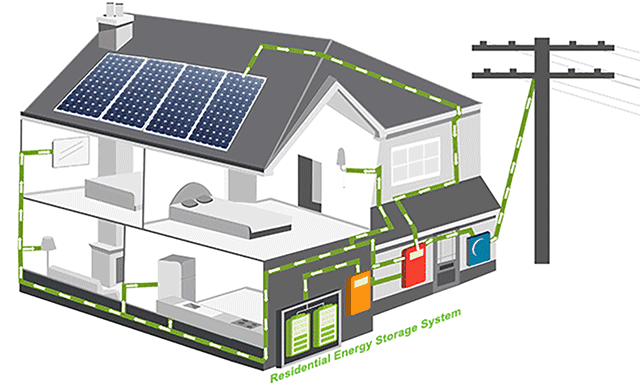A home energy storage system (HESS) works by storing electricity generated from renewable sources like solar panels or wind turbines, or from the grid during off-peak hours. It can then discharge the stored electricity when it’s needed, ensuring a continuous supply of energy.
- Energy Generation: Solar panels or wind turbines generate electricity, and during the day when these systems produce more energy than the house consumes, the surplus energy gets stored in the battery system.
- Energy Storage: The battery stores the excess energy for later use. In a lithium-ion battery, for instance, chemical reactions occur to store energy when charging and release energy during discharging.
- Energy Distribution: When the household needs more energy than what is being generated by renewable sources or when electricity is more expensive (such as during peak hours), the stored energy in the battery is released and used to power the home.
In some systems, homeowners can even sell excess energy back to the grid. This not only improves the energy efficiency of the home but can also provide additional financial benefits.
The key components of an HESS include:
- Battery: Stores the energy. Lithium-ion batteries are the most common due to their high energy density and long lifespan.
- Inverter: Converts the direct current (DC) from the batteries into alternating current (AC), which is the form of electricity used by household appliances.
- Energy Management System: Controls the flow of electricity between the grid, the battery, and the home.
HESS can greatly improve energy efficiency, especially when paired with smart home technology that optimizes when and how stored energy is used.


